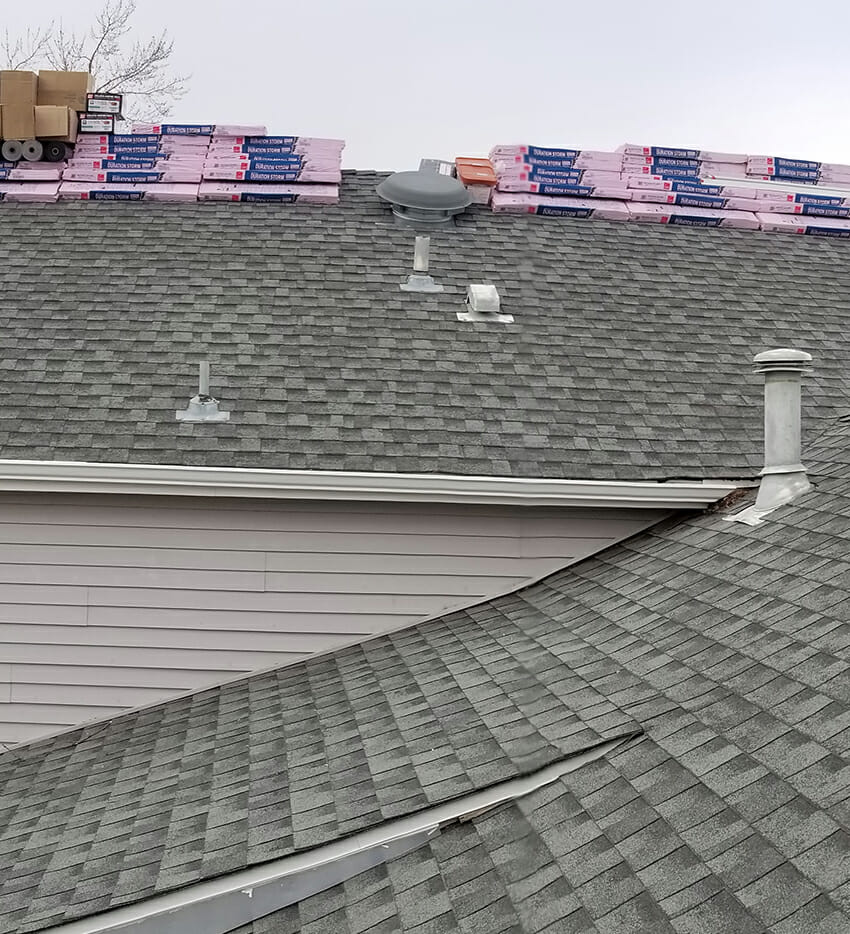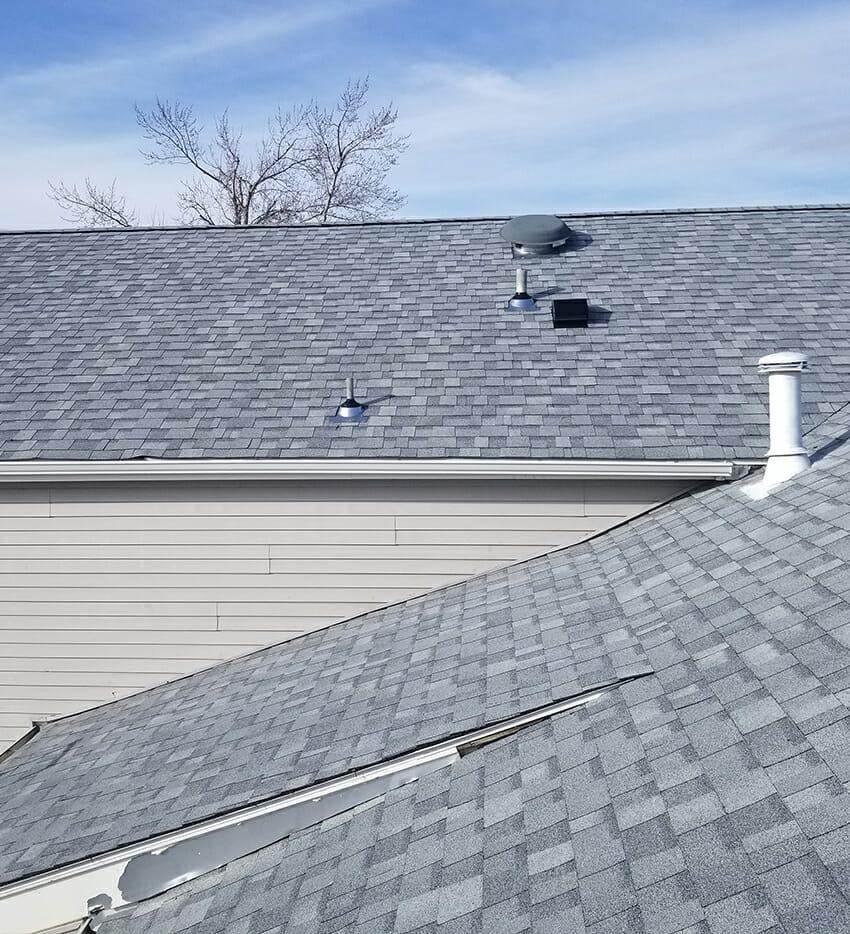Gallery
Take a Look at Some of Our Beautiful Before and After Photos Below!
How old is your roof? It is more common than not that a roof in Colorado will have a life span of around 15 years. Twenty years is really pushing the boundaries of the material that makes up an asphalt shingle. This is no fault to the product, it is actually the fault of our weather in Denver, CO. We get record amounts of hail, as well as sunshine. Take a look at the before and after photos below of some of the roof projects done in your neighborhood.
Broomfield, Colorado
Before
After
This roof in Broomfield, Colorado was brought to the end of it’s life span and then pushed even further. The roof on the left shows the devastation of what Colorado weather, combined with time, can do. The constant UV from the sun breaks down the asphalt in the shingle on a chemical level. This causes the shingle to become brittle over time. The hail that comes in after that actually breaks the shingle down even further. In addition to that, the ridiculous Colorado temperature swings cause that shingle to expand and contract constantly. As that asphalt breaks down and loses its ability to hold the shingle together, the granules begin to fall off. When that happens, the asphalt is no longer protected from the more devastating effects of our Colorado weather and it begins to wear away, revealing the fiberglass that’s woven throughout the shingle. It is long past it’s effective life span. The roof on the right is the same roof but was replaced with Owens Corning Duration Storm. A Class IV shingle that may get you a discount on your insurance premium. Ask about it!
Morrison, Colorado
Before
After
Hire a Team of Roofing Experts You Can Trust.
Schedule Your Free Roof Inspection Today!
 (720) 670-0265
(720) 670-0265



